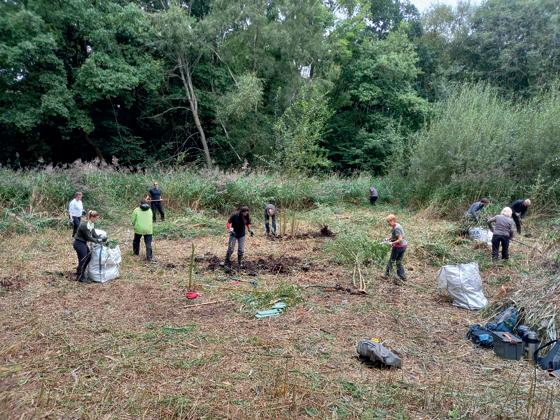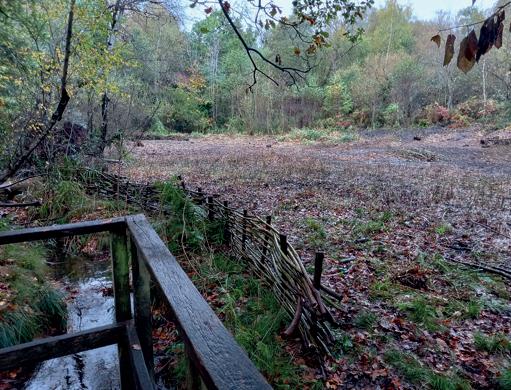
2 minute read
Site Spotlight
Moseley Bog
maintain the fen
Advertisement
BY JAKE WILLIAMS, SENIOR NATURE RESERVES OFFICER
Did you know that Moseley Bog is actually a fen?
The open area of reeds deep in the centre of the wet woodlands, which inspired the site’s name, is a fen habitat fed through groundwater, which provides a home to a variety of vegetation, invertebrates, amphibians and birds. The pond was formerly the main storage pool for Sarehole Mill and was drained between 1843 and 1884 and left for the present-day habitat to develop. A fen is a transitional habitat which when left unmanaged will develop into a wet woodland just like the majority of the Nature Reserve. This development occurs through the encroachment of scrub species such as willow and alder, which dry out the area making it more hospitable for other species of trees to take over. As there is a scarcity of this type of habitat in the area and because it offers a home to a diverse range of species, human intervention is needed. In this case we maintain it through our hard-working volunteers. Unfortunately, over the last couple of years due to complexities over the COVID pandemic, we haven’t been able to carry out the usual management tasks to the fen which has resulted in the scrub encroaching and starting to dry out the fen. This autumn teams of volunteers have been working in the fen digging out the willow and alder, which are trying to establish themselves. As alder is very resistant to water, the trees dug out have been turned into stakes and piled into the ground near springs to help channel the water into the area. The combination of this work has led to the fen becoming much wetter again, providing the right environment for vegetation such as wood horsetail, gypyswort, skullcap, meadowsweet and angelica, which will in turn support an array of wildlife. Patches of scrub and reeds have been left on the edge to allow for nesting sites for birds. The opening of the area will provide excellent bird watching opportunities from the overlooking viewing platform, especially during the winter months as the lack of tree canopy makes spotting birds easier. Grey wagtails, wrens and jays are commonly been spotted here during working parties. Now this work is complete we can now revert to a less intensive management approach where volunteers will cut back half of the reeds each winter to prevent any future encroachment of scrub. We run weekly volunteer days at Moseley Bog & Joy’s Wood Local Nature Reserve alternating between Tuesday and Wednesdays 10:30 – 15:00 as well as the third Sunday of each month at the same time.

Find out more at
bbcwildlife.org.uk/volunteer










